Theotokos of Kursk Icon – March 8
The Kursk-Root Icon of Out Lady of the Sign The Kursk-Root Icon is one the most ancient icons of the Russian Orthodox Church.
| The Kursk-Root Icon of Out Lady of the Sign The Kursk-Root Icon is one the most ancient icons of the Russian Orthodox Church. In the 13th century, during the dreadful period of Tatar invasion of Russia, most of the devastated province of Kursk was emptied of people and its principal city, Kursk, became a wastelande.The residents of the nearby town of Rylsk often traveled to the site of Kursk to hunt wild beasts. One of the hunters, a pious man, going along the bank of the river Tuskora, 27 kilometres from the ruined city of Kursk, noticed an icon lying face down on the ground next to the root of a tree. The hunter picked it up and discovered that it was an icon of the Theotocos of the Sign. The Icon’s first miracle occurred, for as soon as the hunter had picked up the sacred image, a large spring of pure water gushed forth with great force. This took place on the feast of the Birth of Our Most Holy Lady of the Theotokos and Ever-Virgin Mary, September 8, 1295. The water became known for its miraculous healing power.With the help of friends, the hunter built a small wooden chapel and placed the newly manifested image of the Mother of God therein. Prince Vasily Shemyaka ordered that the Icon be brought to the town of Rylsk, which was done in a solemn manner. The people of the town went out to meet the Icon. But the prince, due to his lack of faith and piety, refused to attend the festivities, and for this reason was punished with blindness.The prince, acknowledging his wrong doing, ran out to meet the Icon. He publicly confessed his sin, and immediately received healing. Moved by this miracle, he built a church in the town of Rylsk in honour of the Nativity of the All-Holy Theotokos. The Icon was enshrined in this church, on September 8, this being the day of its manifestation. This date became the Icon’s annual feast day. The Icon, however, vanished in a miraculous manner, returning to the place of its original appearance. The residents of Rylsk continuously brought it back, but each time the holy Icon returned to the little deserted chapel in the woods. Innumerable pilgrims streamed to venerate the place of the Icon’s miraculous appearance, where a priest named Father Bogolyub, whose name means “lover of God”, struggled in asceticism at the humble wooden chapel.In the year 1383, the province of Kursk was subject to a new Tatar invasion. Finding the chapel in the woods where the priest was praying, they tried to set fire to it, but it refused to burn. The mean-spirited Tatars laid hold of the holy Icon and cut it in two. They threw one part into nearby bushes, while the other half they threw into the forest. The chapel then caught on fire and the priest was carried off as a prisoner.One day, as he was passing the time by singing prayers to the Mother of God, some representatives of the Tsar of Moscow who were passing by heard this chanting and arranged to ransom the priest from captivity. The priest returned to the former site of the chapel. There, to his great joy, he found the pieces of the miraculous Icon that the Taters had thrown away. A new chapel was then built on the original site of the Icon’s appearance and there it remained for about 200 years.The city of Kursk was revived in the year 1597 by command of Tsar Theodore Ivanovich of Moscow. This pious Tsar heard of the Icon’s miracles and expressed his desire to see it. The Icon was brought to Moscow with great solemnity, and was met by a great multitude. Tsatitsa Irene Theodorovna adorned the holy Icon with a precious riza (a metal covering). At the Tsar’s command, the Icon was placed in a special gold frame depicting the Lord and the Old Testament Prophets holding scrolls in their hands with prophecies concerning Christ and His Mother. The Icon was later returned and, with the close cooperation of the Tsar and many donations, a monastery was founded on the site of the chapel. This monastery was called the Kursk-Root Hermitage, which is called in Russian Kursko-Korennaya Pustyn – “Korennaya” being a form of the Russian word for “root”. There were two main churches in it: one was dedicated to the Nativity of the Mother of God and the other to the Life-giving Spring, built over the original spring that had miraculously appeared where the Icon was first found.Due to the dangers of Tatar invasions, the Icon was transferred for safety from the Kursk-Root Hermitage to the city of Kursk. In 1603 Lzedimitriy I, who proclaimed himself to be the tsar, took the Icon to his camp in Putivl, and later – to Moscow, where it stayed at his palace till 1615. That time the miracle-working Icon was returned to Kursk. And in 1618 it was placed in the cathedral of the Znamensky Monastery, “Znamensky” meaning “of the Sign”, built in the city of Kursk. It was the time of Polish invasion, and the citizens of Kursk then made a vow that, if they were delivered from the enemy, they would construct a monastery in honour of the All-holy Theotokos. Soon thereafter , the Kursk-Root Hermitage was rebuilt and the Icon was carried in procession from the Kursk Monastery in the city to the hermitage and Back. Therefore, every year on Friday of the ninth week after Pascha (Easter), the Icon of the Sign is solemnly brought – 27 kilometers along – in procession from the Kursk Cathedral of Sign to the place of its original manifestation at the Kursk-Root Hermitage, where it remains until September 12. And so it was till the year of 1919 when the miracle-working Icon of the Theotokos left Russia.The Healing of the Saint Seraphim of SarovSaint Seraphim (Prokhorus Moshnin) was born in the city of Kursk in 1759 of pious and well-to-do parents. In 1762 his father Isidore Moshnin was engaged in erecting a cathedral in honour of Our Lady of Kazan and saint Sergius of Radonezh. He had died, and the construction was finished by his mother Agathia, devoted to the Church even more than her husband.At the age of 9 Prokhorus became seriously ill, so that it was thought that he would not recover. Just at that critical time, in his sleep he had a vision of the Most Holy Mother of God Who promised to visit him and heal his sickness. When the wonderworking Kursk-Root Icon of Our Lady of Sign was carried in procession through Kursk, the procession went through the Moshnin’s yard. The pious Agathia took her sick child in her arms and carried him out to the Mother of God. The boy kissed the Icon and, soon after, he completely recovered.The Kursk-Root Icon Helps Orthodox WarriorsMany pages of history are associated with the Kursk-Root Icon. Cossacks (an elite corps of horsemen mainly from Southern Russia) were blessed by it in 1676. By special decree copies of the miraculous Icon accompanied armies to the front; in 1812 people and chief of the Army duke M. Kutuzov prayed before such a copy during Napoleon’s invasion of Russia. During the Great Patriotic War (World War II) the Icon traveled with the Russian Army to the fronts and Russian soldiers felt the protective veil Our Lady of the Sign.Anarchists Attempt to Destroy the IconIn March of 1898, a group of anarchists (terrorists /revolutionists), wanting to undermine the people’s faith in the Icon’s wonderworking power, decided to destroy it. They placed a time bomb in the Cathedral of the Sign in the city of Kursk, and at 2 o’clock in the morning there was a devastating explosion that shook the monastery walls. The frightened monks ran immediately to the cathedral, where they saw horrible devastation. The force of the blast had shattered the gilded canopy above the Icon. The heavy marble base, built of several massive steps, had been jolted out of position and had split into several pieces. A huge metal candlestick that had stood before the Icon had been blown to the opposite side of the cathedral. A cast iron door near the Icon had been torn from the hinges and thrown outside where it had smashed against a wall and caused a deep crack. All the windows in the cathedral, including those in the dome above, were shattered. Amid the general devastation, the holy Icon remained in one piece and even the glass within the frame remained whole. Thinking to destroy the Icon, the anarchists had, on the contrary, become the cause of its greater glorification.The Communist Revolution and the Theft of the IconDuring the Bolshevik (Communist) revolution, the Icon was stolen from the Cathedral of the Sign on April 12, 1918. A search was made for the Icon, but it was not found. The holy object was discovered under the following circumstances. Not far from the monastery lived a poor girl and her mother, who for three days had nothing to eat. At that time, Kursk was controlled by the Bolshevik regime.On May 3, the girl, a seamstress, went to the marketplace in search of bread. On her way home she passed by a wall that, according to tradition, had been dug by Saint Theodosius of the Kiev Gaves. There, on the edge of the well, she saw a package wrapped in the sack. When she opened the package she found the sacred Icon, which apparently had been left there by those who had stolen it.At the end of October 1919, when the White Russian Army was evacuating the city of Kursk, the Icon was transferred to Novorossiisk. From there it left Russia on the Saint Nicholas steamship in the protection of Bishop Theophan of Kursk on March 1, 1920, and was transported to the city of Thessalonica, Greece. On April 2, Bishop Theophan took the Icon to the town of Pec, the ancient capital of Serbia. And in September 1920, it was again returned to the Crimea.On October 29, 1920, a year after leaving the city of Kursk, the holy image again left its native land during the evacuation of the White Army and those Russian people who refused to submit to the Soviet regime. The Kursk-Root Icon became the Hodigitria or Directress of the refugees.After arriving again in the kingdom of Serbs, Croatians and Slovenes (later named Yugoslavia), with the blessing of Patriarch Dimitry of Serbia, the holy Icon remained with the Bishop Theophan in the Serbian monastery. From the end if 1927, the Icon was to be found in the Russian church of the Holy Trinity in the city of Belgrade.In Eastern Europe with Russian RefugesDuring World War II, the Communists began invading countries in Western Europe (Poland, Romania and Bulgaria) and also succeeded in capturing Yugoslavia. The Icon, which was the faithful companion of those Russian People who had not accepted the Communist power, was removed from Belgrade on September 8, 1944, together with those who were once again fleeting from godless regime.It was first taken to Vienna, where it remained for several months. During this time, the city often underwent aerial bombing, and the Icon, as in Belgrade, worked many miracles during those difficult times. From ruined Vienna, the Icon was brought to the quiet city of Carlsbad in Germany, to which the Synod of Bishops of the Russian Orthodox Church Abroad had been evacuated. With the approach of the Bolsheviks, it was again transferred, this time to Munich, in the spring of 1945. The holy Icon proved to be unending consolation to many thousands of people experiencing all the trials and tribulations of the latter years of the Second World War. From Munich, the Icon was taken to Switzerland, France, Belgium, England, Austria, and many cities and camps in Germany.The Icon Arrives in New YorkIn 1951 the Icon was transferred to America, where it gad its permanent residence, first in the New Kursk Hermitage in Mahopac, 40 miles from New York City, and since 1959 – in the Synod’s Cathedral Church of the Mother of God of Sign in New York City (75, East 93rd St.), the residence of the First Hierarch of the Russian orthodox Church Abroad.The Kursk-Root Icon TodayToday the Icon visits Orthodox parishes all over the world and its fame is international. It is known for countless miracles, healings, and for assistance in misfortunes. It is significant that Saint John of Shanghai and San Francisco (+1966), who was glorified as a saint in 1994, reposed before this very Icon.For seven centuries, faithful Orthodox Christians have prayed before the miraculous Kursk-Root Icon of the Mother of God and have received help according to their faith.Most Holy Theotokos save us! |
Source: ourladyofkursk.org

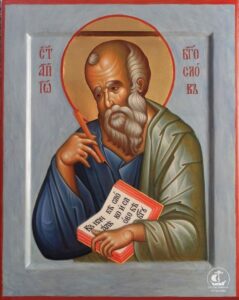
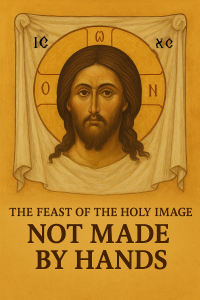
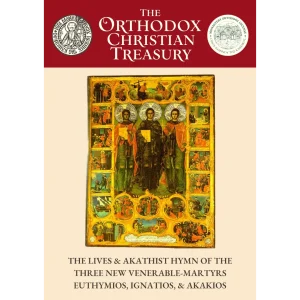
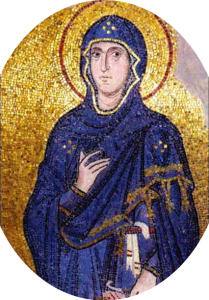
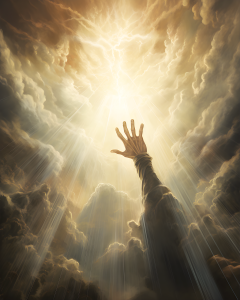
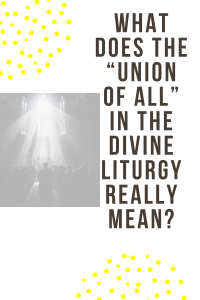
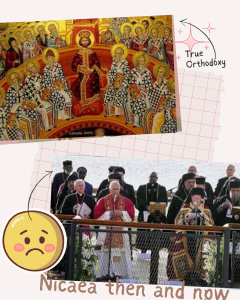
Tenth Sunday after Pentecost : Healing the Possessed Youth.
Sermon by Archbishop Andros Rymarenko (1893-1978)
As last Sunday’s Gospel told us about a storm on the Tiberian Sea, in the same way today’s Gospel also tells us about a storm, only about a storm which is even more terrible. Back then, there were waves on the sea, but here.. .listen to what the father of the youth said to Christ: “Lord, have mercy on my son: for he is lunatic, and sore vexed: for of times he falleth into the fire, and oft into the water” (Mt. 17:15). There, Peter got out of the boat in which the other Apostles were sailing. Notice that Christ did not send him as He sent all the disciples across the sea. But Peter himself, filled with the rapture of faith at seeing Christ walking upon the waves, asked for permission to do the same. And what happened? He doubted and started to drown. And Christ said to him, “O thou of little faith, wherefore didst thou doubt?” (Mt. 14:31).
And what about today’s Gospel? In today’s Gospel, the father of the possessed son brought him first to the disciples of Christ. The power to cast out devils and to heal sicknesses had been given to them; this seemed to go along with their obedience. And yet they could not heal hint. And when the father in deep grief related this to the Lord, Christ in anger exclaimed: “O faithless and perverse generation.. .how long shall I suffer you? bring him hither to me. And Jesus rebuked the devil; and he departed out of him…. Then came the disciples to Jesus apart, and said, Why could we not cast him out? And Jesus said unto them, Because of your unbelief: for verily I say unto you, if ye have faith as a grain of mustard seed, ye shall say unto this mountain, remove hence to yonder place; and it shall remove; and nothing shall be impossible unto you. However this kind goeth not out but by prayer and fasting” (Mt. 17:17-21).
This is what faith means! But where do we find this faith? Only in the Church. The Apostles, sailing in the boat in obedience to Christ, despite the storm, did not doubt. Their boat had sides which protected them from the pressure of the waves; it had a bottom which separated them from the water; it had a rudder which guided it. In the same way the ship of the Church has everything which is needed to sail over the sea of life, through its storms, to the other shore of Eternal Life. As in the boat the bottom is its foundation, so in the ship of the Church, the foundation is the teaching of Christ which points out the way to life through the Beatitudes (Mt. 5:3-11). Poverty of spirit, weeping for sins (that is, repentance), meekness, hunger and thirst for righteousness, mercifulness, purity of heart, peacemaking, suffering for the truth — this is the foundation of the Church ship. And its sides are the Apostolic rules. This is everything which Christ has passed on to His Apostles, which for the most part is again based on Holy Scripture, and partially is kept in the treasury of Church Tradition.
And what treasure is being carried by the ship of the Church? These are the seven Sacraments of the Church which all have their foundation in Holy Scripture. The Book of the Acts of the Apostles relates to us about the ordination of priests and deacons from which comes our Sacrament of the Priesthood (Acts 6:3, 5-7). In His first appearance after the Resurrection, Christ breathed on the Apostles and said, “Receive ye the Holy Spirit: whose so ever sins ye remit, they are remitted” (Jn.20: 22-23). Here is the foundation of the Sacrament of Confession. The words of Christ at the Last Supper, “Do this in remembrance of Me” (Lk. 22:19); and all the chapters from John where it speaks about the Bread of Life — this is the establishment of the Sacrament of Communion (Jn. 6:32-58). The teaching of the Apostle Paul about the relationship between husband and wife speaks of the holiness of the Sacrament of Marriage (I Cor. 7:2-17; Eph. 5:22-33). In the Epistle of James instructions are given about the anointing of the sick one with oil and about the prayer of faith for him (James 5:14-15). And so with all the sacraments. And still more: all Church establishments come from the Lord Himself. Here in today’s Gospel it tells about the necessity of fasting and prayer. And this is Christ Who says it to His disciples. In the Orthodox Church there is nothing invented by man or added; but neither is there anything subtracted, abbreviated from the teaching of Christ and His Apostles.
“I believe in one, holy, Catholic and Apostolic Church. “* Another Catholic and Apostolic Church does not exist on earth.
So let us treasure our Church-ship. Let us never abandon it. It has everything for us. It also has this wonderful faith which even moves mountains, and with such faith nothing will be impossible. It will lead us through the storms of life and will bring us to the shore of Life Eternal.